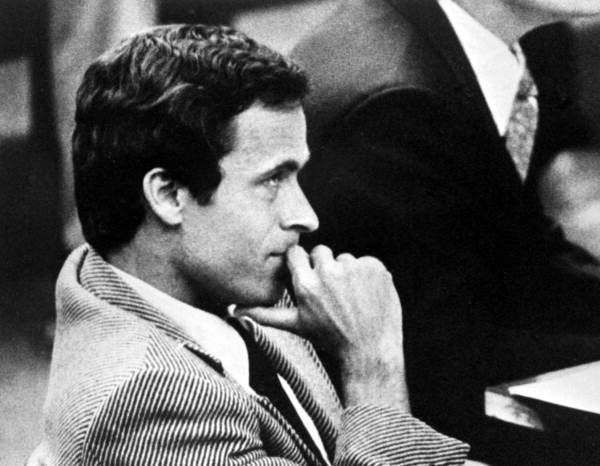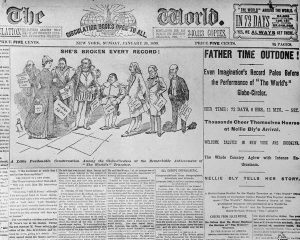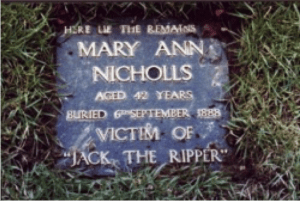Patrolman David Lee with the Pensacola Police Department was conducting his routine patrol in the early morning hours of February 15, 1978, when he just happened to cross paths with Theodore Bundy when he stopped him for a traffic violation. After a slight scuffle in which Bundy tried to flee, Lee managed to handcuff and secure him inside his vehicle. Bundy was quiet for most of the ride, and he knew his criminal adventures were finally over.1 After two successful escapes from jail, there was not going to be an opportunity for another.2
“I wish you had killed me.” He told Lee from the back of the car. “Would you kill me if I tried to run?”3
Before Bundy’s killing spree began, he attended the University of Washington, where he obtained a Bachelors degree and two years of law school.4 Based on the knowledge he gained in law school, Bundy insisted on being directly involved in conducting his defense in each of his trials, which is where his legal downward spiral began. During his sentencing trial, he attempted to connect with his jury and humanize himself by using carefully chosen Bible scripture. He wanted his largely southern jury to see him as comparable to Christ. He assured them that he was no Christ figure, but he urged them to remember how Christ had experienced an unjust trial and was subsequently executed on the basis of that unjust trial.5

As his final trial started to come to its inevitable end, Bundy did everything he could to postpone his execution date. He had multiple interviews with several different individuals; in each interview he would reveal something about himself that he would use to charm or manipulate his audience. One of these interviews led to an examination of evidence to see if Bundy was incompetent at the time of trial, which postponed his sentencing hearing. When a reporter questioned Bundy in an attempt to get him to admit to the thirty suspected murders, Bundy replied, “Put a zero after that.”6 Though we will never be certain on an exact number of murders that Bundy committed, it is without a doubt higher than the thirty that he officially confessed to.

Finally, on January 17, 1989, Bundy’s fourth and final death warrant was signed.7 It was at this point that he started confessing to multiple murders in an attempt to stave off his execution. After having been able to squeeze his way out of nearly every other situation he had managed to entangle himself in, he finally started to realize the inescapable reality, and the mask that he put on to keep the world from seeing him for what he really was, started to slip. He immediately began to look for his way out, trying to tug at the heartstrings of anyone who would listen. His last card to play was his interview with James Dobson.8

Dr. James Dobson is the founder of Focus on the Family, a Christian organization based in Colorado.9 At the time of Bundy’s interview, Dr. Dobson’s campaign was that pornography and violence were interrelated, and since Bundy was looking for a way to keep people talking about him, they were a match made in heaven. Throughout the interview, Dr. Dobson and Bundy were able to craft an entirely new story that thousands of people would believe. Bundy was able to portray himself as being corrupted by pornography from a young age, that pornography is what caused his violent behavior. Dr. Dobson had his perfect poster child. There was a question in the middle of the interview in which Dr. Dobson questioned Bundy about the murder of Kimberly Leach, and Bundy stated that he couldn’t talk about it.
“One of the final murders that you committed, … little Kimberly Leach, 12 years of age. I think the public outcry was greater there because an innocent child was taken from a playground. What did you feel after that? Was there normal emotions three days later? Where were you, Ted?” asked Dr. Dobson.

“I can’t really talk about that,” said Ted Bundy.
“That’s too painful,” Dr. Dobson interjected.
“I would like to be able to convey what that experience is like, but I can’t be able to talk about it,” said Ted Bundy.
“OK,” said Dr. Dobson.10
At this point, the camera caught Bundy’s quick glance at Dr. Dobson, clearly reading and carefully considering his next words. It was at this moment that Bundy’s eyes looked up at Dr. Dobson and in those few seconds his mask slipped, revealing the heartless murderer making his cold calculations on what his next move would be. The facade of the repented sinner that was corrupted by pornography that Bundy had been attempting to convey to us crumbled to reveal the truth, a psychopathic killer.

Throughout the entire forty-minute interview, he carefully chose his words in order to most effectively charm whatever audience he could manage to get his words to. This interview is where we get one of his most infamous quotes:
“And people need to recognize it’s not some kind of . . . those of us who are or who have been so much influenced by violence in the media, in particular, pornographic violence, are not some kind of inherent monsters. We are your sons and we are your husbands, and we grew up in regular families. And pornography can reach out and snatch a kid out of any house today. It snatched me out of my home 20, 30 years ago, and as dedicated as my parents were, and they were diligent in protecting their children and as good a Christian home as we had, and we had a wonderful Christian home, there is no protection against the kind of influences that are loose in society that tolerates. . . .”11
Ann Rule, a former co-worker and friend of Bundy, immediately recognized the interview for what it was: a final attempt to save himself, to blame someone other than himself for what he did.
“Dr. Dobson wanted someone to testify against booze and pornography, and Ted wanted to leave us all talking about him. He wanted to blame someone else for his crimes, and by saying it was us who left all those bad magazines on the racks, he became innocent in his own mind.”12

On January 24, 1989, Theodore Bundy died in the electric chair. As the white flag signaling his death was waved from the prison yard, cheers could be heard from the crowd gathered across the street. The chant “Burn, Bundy, burn!” paired with the banging of frying pans rang out in the early morning air.13
Dr. Dobson did not release the interview until after Bundy was executed. In a way, both of these men achieved their goal. Dr. Dobson had a real-life example of the dangers that pornography can have on a perfectly “normal human.” Bundy was able to keep people talking about him, his horrific murders, and what possible factors led him to commit those crimes. Several women viewed Dr. Dobson’s interview with Bundy and saw the compassion and remorse that Bundy was attempting to portray, while others were able to see through his last lie.14 Bundy went down in history for being one of the most cold blooded killers who will continue to be discussed for generations.
Though many people still protest Bundy’s execution, there is one thing we can all agree on: “He had an easier death than any of his victims.” 13
- George R. Dekle, The Last Murder: The Investigation, Prosecution, and Execution of Ted Bundy: The Investigation, Prosecution, and Execution of Ted Bundy (Santa Barbara, California: Praeger, 2011), 16. ↵
- Kristen Iversen, “When Death Came to Golden,” American Scholar 87, no. 2. (2018): 82. ↵
- George R. Dekle, The Last Murder: The Investigation, Prosecution, and Execution of Ted Bundy: The Investigation, Prosecution, and Execution of Ted Bundy (Santa Barbara, California: Praeger, 2011), 16. ↵
- George R. Dekle, The Last Murder: The Investigation, Prosecution, and Execution of Ted Bundy: The Investigation, Prosecution, and Execution of Ted Bundy (Santa Barbara, California: Praeger, 2011), 22. ↵
- George R. Dekle, The Last Murder: The Investigation, Prosecution, and Execution of Ted Bundy: The Investigation, Prosecution, and Execution of Ted Bundy (Santa Barbara, California: Praeger, 2011), 212. ↵
- George R. Dekle, The Last Murder: The Investigation, Prosecution, and Execution of Ted Bundy: The Investigation, Prosecution, and Execution of Ted Bundy (Santa Barbara, California: Praeger, 2011), 219. ↵
- George R. Dekle, The Last Murder: The Investigation, Prosecution, and Execution of Ted Bundy: The Investigation, Prosecution, and Execution of Ted Bundy (Santa Barbara, California: Praeger, 2011), 218. ↵
- Kristen Iversen, “When Death Came to Golden,” American Scholar 87, no. 2. (2018): 88. ↵
- Dr. James Dobson Steps Down as Focus on the Family Chairman (Colorado Springs, Colorado: Focus on the Family. February 27, 2009), https://www.focusonthefamily.com/about/newsroom/news-releases/20090227-dobson-steps-down-as-focus-chairman. ↵
- The Associated Press,”Bundy’s Last Interview; ‘I take full responsibility,'” The Palm Beach Post, January 29, 1989, 7-8. ↵
- The Associated Press,”Bundy’s Last Interview; ‘I take full responsibility,'” The Palm Beach Post, January 29, 1989, 7-8. ↵
- LAST BUNDY INTERVIEW CALLED `CON GAME,’ Salt Lake City, Utah: Deseret News. September 12, 1989. ↵
- Barry Bearak, “Bundy Electrocuted After Night of Weeping, Praying : 500 Cheer Death of Murderer,” Los Angeles Times, 24 Jan. 1989. ↵
- LAST BUNDY INTERVIEW CALLED `CON GAME,’ Salt Lake City, Utah: Deseret News. September 12, 1989. ↵
- Barry Bearak, “Bundy Electrocuted After Night of Weeping, Praying : 500 Cheer Death of Murderer,” Los Angeles Times, 24 Jan. 1989. ↵



125 comments
Avery Looney
I have heard about Ted Bundy and the horrible crimes he committed, but I was not familiar with what he did after his arrest. I never knew that Bundy had such an active role in his trial and that he would defend himself and try to convince the jury to not have him executed. He did everything in his power to try to avoid the electric chair and he wanted everyone to continue talking about him. In the end Bundy would be executed, but his wish of everyone continuing to talk about him would be fulfilled. Ted Bundy is one of the most well know serial killers, and nobody will forget about the psychopath’s actions.
Madison Downing
The last sentence from this article was so chilling I loved it! I only knew a little bit about Ted Bundy but I never knew, until reading your article, that he killed so many more people than he was charged for. The pictures you used really helped get across of a man trying his best to lie his way out of yet another sticky situation he got in. I do believe in the death penalty and I agree that Bundy deserved what he got because if we went too far with punishing him then we would be no better than what he was, someone that wasn’t human.
Mariana Valadez
This article was very interesting and kept me on my toes the entire time. I could not stop reading and it is crazy how one person could do such ruthless acts. It is also crazy how long he kept up his act and it is sickening to see someone could do this. It is sad to know about all of the people affected.
Rylie Kieny
This is a very interesting article and gives a perspective that usually isn’t looked at. When hearing of Ted Bundy its usually only about all he victims and the heinous crimes he committed. Rarely the why is ever discussed. I believe this story about his “final lie” really shows that he was a criminal mastermind. I was also unaware of his previous schooling. I think the fact that he went to law school is very important to his story especially when it comes to him representing himself in the court. However, personally I don’t think anything he could have said would have convinced me that he wasn’t a cold blooded killer.
Greyson Addicott
The first paragraph really stands out from the rest of the article by describing an event, shortly before diving into the history of Ted Bundy and his subsequent execution. He was certainly an insane individual, and the fact that his cold calculations kept him out of the chair for so long is really interesting. Luckily, the United States have been particularly absent of high-profile serial killers. This article must be given praise for its ability to keep with a single theme, for it lacked any deviation from the main idea: Ted Bundy’s lies and manipulation of our courts.
Madison Guerra
It is crazy to read about how Ted Bundy tried so hard to pull at peoples emotions and prolong his death for as long as he could. He was truly a sick human being and he deserved to fry the way he did. It was very interesting to read about and the article was very well written. It kept me hooked the entire time.
Lorenzo Rivera
This article was extremely interesting and very well written. It have such a great insight on the life of a deranged psychopath, and how he was almost able to continue an elaborate charade until the day he died, to justify his utter cruelty and inhumanity. Ted Bundy was arguably one of, if not the most ruthless human beings to ever walk this planet, and in my opinion, his frivolous attempts to justify what he did, only contributed to his inevitable demise.
Lilliana Canales
I think it was quite foolish of Dr. Dobson to actually believe that Ted Bundy, being a serial killer, was an actual example of how something like pornography influenced his murderous mindset. As for Bundy, he was wise to choose Dobson to manipulate, but it still didn’t work in his favor. This article was very interesting and I now know more about Ted Bundy’s attempts to secure his freedom.
Gabriela Ochoa
I found this article very interesting, I have heard of Ted Bundy and the things he did but never knew the full details or that he tried to persuade the world that he was innocent. I never knew that he went to law school and defended himself in his own case. I wasn’t surprised to read that he tried everything he could to drag out his case and make the people see that he wasn’t who they claimed he was. The interview eventually showed who he actually was though some still believe that he was a good person and only did those things to those women because he was “corrupted” and actually a bad person.
Lyzette Flores
I had never heard of the serial killer Ted Bundy but reading about it gave me the chills. I feel as if you have already committed the crime why not just confess it all? I know Bundy did not want to confess the truth because he wanted the people to feel sympathy and humanize for himself. I can agree that Bundy did have an easier execution than his poor victims.